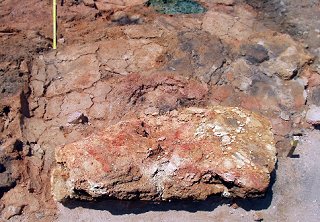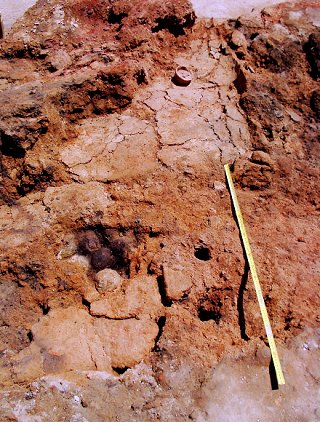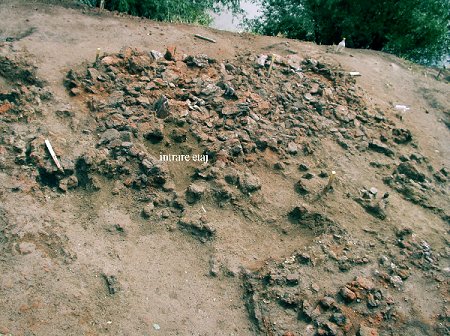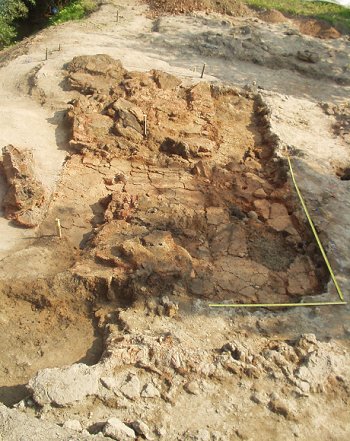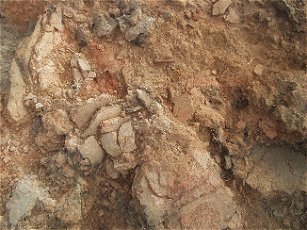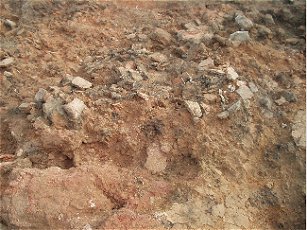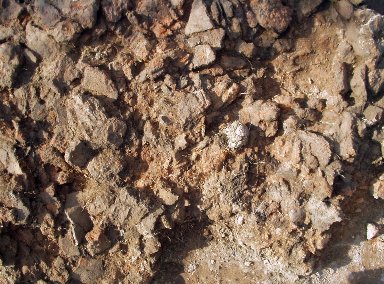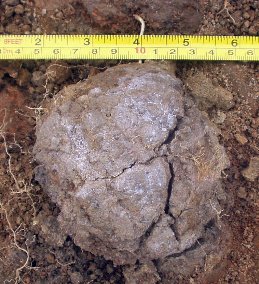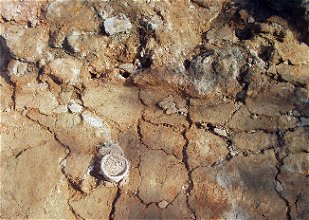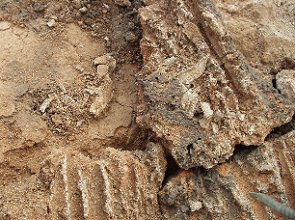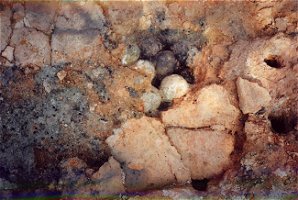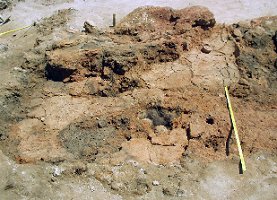

Because between rooms C and D there was a passageway, we cannot exclude the hypothesis of an entrance to the west, from the passageway, that separated the west rooms (C and D).
Looking from the north, we can see the posthole pit near the edge of the platform. The platform has a 7-8 cm high frame and was connected with the upright wall (that was not plastered with clay). Big postholes, from the basic structure have been noticed on the edge of the platform on the store and ground floor. Some of them sustain the beams and girders of the store, others the roof structure. From the next pictures we can see how the upper level floor of the southern room was broken; at different depths there are fragments of the floor, fallen down gradually, during the burning of the beams of the floor structure. We can also notice the different structure of the floor on the upper level and on the ground floor. The last one has only cracks and no big, massive breakings, as those of the store. We believe that this dwelling offers a very good example to the younger colleagues to better understand the construction system and to interpret the data.
In 2005 campaign our research stopped at this stage. The pot from the southern room
On the floor of the ground floor, near the architectonic element (frame of the window or cassette) fragments of a big storing pot have been found. Such fragments, from the same pot or a similar one were found between or on top of the ruins of the upper level.
Close by, under the ruins of the wall of the upper level (with an oblique pillars structure, arranged on two different directions) on the floor, a big dry clay sling ball was discovered. When the wall fell down the ball was already dry, because we found it entire. Such clay sling balls, for war, have been found under the floor of room D, in the northern part, as well as in other different dwellings at Parta. Some of these pieces have been discovered under the ruins; some were broken while being used to hit the altars (household altar from P 126: Lazarovici et alii 2001, p. 288, fig. 262). In their documentation, Fr. Resch and C. Germann mention ovens that inside have, for firing, big clay sling balls.
Objects on the ground floor Few ceramic objects have been discovered on the ground floor. Between them a bowl with 4 protuberances in spite of handles. Nearby were some burned animal bones, engraved on the floor. They are analyzed now, so more details will be available after the expertise.
Depositions under the floor of the ground floor Under the floor of room D, near a structure pillar, we found many big clay sling balls. The balls have traces of firing from the floor and from the ground floor that fell down. In this area the floor has a span. Near this area we found 3 fragments from a broken clay disk that may have covered the span.
|
||||||||||||||||||||||||||||||
